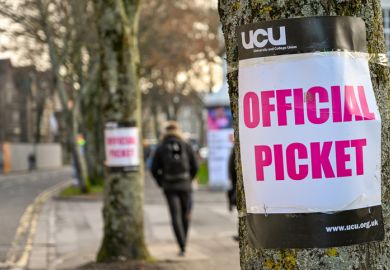University nurseries appear to be falling victim to the UK sector’s wave of cost-cutting, with staff warning that “short-term” decisions based solely on finances risk setting institutions back on access goals, academic career progression and gender equality.
Queen Mary University of London has become the latest institution to announce plans to close its on-site childcare facility, Westfield Nursery, claiming that it was losing hundreds of thousands of pounds a year after demand dropped post-pandemic as more staff worked from home.
Last year, the University of Leicester stopped offering on-site childcare, as did Coventry University, despite impassioned campaigns from parents and their toddlers.
The universities of Worcester and Brighton have similarly shut facilities since the Covid lockdowns, and Middlesex University had earmarked its nursery for closure in 2023 before reversing the decision, although the site’s long-term future remains far from certain.
Like much of the rest of the early years sector, campus nurseries have suffered because of underfunding by the government, which has expanded its commitment to offering free hours of childcare without increasing grants to support it at the same pace, said Nadia von Benzon, a lecturer in human geography at Lancaster University.
Widespread staff shortages have been prompting nurseries across the board to shut, limit their operating hours or cap the number of places available, she added, and most could not rely on an institution to step in and bail them out.
University nurseries may be suffering more than others because academics often commute long distances to their institutions and tend to be on-site less often nowadays, leaving them to seek childcare options closer to home, Dr von Benzon said.
But those who use the university facilities said they were a lifeline, especially when navigating the often-difficult return to work following a period of parental leave.
Linus Wunderlich, a lecturer at Queen Mary whose daughter attends its campus-based facility, said sending her to Westfield Nursery had initially been a “very daunting experience” because she was experiencing a lot of separation anxiety.
Now, it was “like a second home” to her, Dr Wunderlich said, thanks to the staff, all 19 of whom are set to be made redundant.
He said having a nursery close to where he teaches offered flexibility, especially given that his lectures often do not finish until 5pm.
Campus resource: From prams to postgraduate degrees: how universities can support student parents
“Since we heard of the planned closure, we have contacted several nurseries and are on their waiting lists. None of them have been able to confirm that a place would be available by September, and none of them have opening hours flexible enough to allow me to teach until 5pm,” Dr Wunderlich said, adding that a place at a new nursery will cost the family £4,000 a year more because the Westfield site was subsidised by Queen Mary, which kept costs down.
Campaigners fighting closures have also highlighted the equality impact, with more female academics, who still disproportionately take responsibility for childcare, facing a choice between dropping hours or pausing their career entirely if no alternative provision can be found.
Middlesex was convinced to keep its nursery open after the case was made that students and staff would leave if it were to shut, resulting in a significant financial impact in lost tuition fees and recruitment costs, said Dan Ozarow, a senior lecturer at Middlesex whose two children have attended its nursery.
Students affected included single mothers who would have been forced to abandon their studies, denting the university’s widening access goals.
This broader view did not seem to have been considered by the university previously, Dr Ozarow said, adding that the “short-termist” decision to shut the nursery appeared to have been made solely on the basis of the income it generated.
Nor had much been done to promote the facility to employees, students and the wider public, despite the benefits it offered for staff retention and community relations, said Dr Ozarow, adding that he felt this has since been rectified.
Its salvation may yet turn out to be only a “stay of execution”, he worried, given that the nursery was still operating from a temporary home and its long-term future was uncertain.
Elizabeth Faulkner, a lecturer in law at Keele University whose research has looked at the challenges facing academic mothers, said access to childcare provision was being repeatedly raised as an issue in a survey she was conducting among university staff.
“It is not necessarily just about nursery closures. There is a bigger picture here, and it relates to caring as well, in that there is an assumption that these responsibilities aren’t the university’s issue,” she said.
Given the financial pressure created by the government’s roll-out of free hours of childcare, universities were going to face demands for extra support for their nurseries, Dr Faulkner added, but there was a view among managers that such services “did not fit in with university structures at the moment because of the financial uncertainty. If they can avoid paying out for childcare provision…then it is better for them and their investments going forward.”
Register to continue
Why register?
- Registration is free and only takes a moment
- Once registered, you can read 3 articles a month
- Sign up for our newsletter
Subscribe
Or subscribe for unlimited access to:
- Unlimited access to news, views, insights & reviews
- Digital editions
- Digital access to THE’s university and college rankings analysis
Already registered or a current subscriber?








